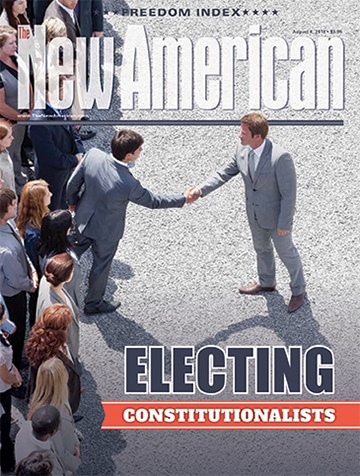Electing Constitutionalists
It has been said that you cannot change your destination overnight, but you can change your direction overnight. This observation applies to nations at least as much as to individuals, and never more so than with the approach of national elections. No one election and no one candidate can possibly be a cure-all for national ills, any more than the outcome of a single election can necessarily change the destination toward which a country is headed. But elections sometimes do change our national direction, and, if the new momentum conferred by one electoral shake-up is sustained in succeeding elections, our national destiny can be changed — for better or worse.
For many decades, the direction dictated by election after election in the United States was clear: more and more government; higher and higher taxes, debt, and inflation; and weaker and weaker constitutional restraints on the exercise of federal government power. This trend has been very clear since at least the 1930s, and despite the occasional blip — a Reagan presidency, a “Republican revolution” in Congress in 1994 — none of these trends have shown any sign of changing. Today the national debt is higher than ever and the federal government enjoys immense ascendancy over nearly every facet of American life, in raw contrast to what the Founders intended. Thanks to an entrenched, inflationary central bank (the Federal Reserve), America’s money has been stripped of much of its value, the cost of living has risen vertiginously, and debt both public and private threatens to completely overwhelm our society.
In such a secular crisis, politicians who advertise themselves as candidates of change have not been in short supply; yet real change — change pointing to a different long-term outcome — has failed to materialize.
Until 2016. In November of that year, ordinary American voters shocked the world by electing a new type of president, a man who had never held political office or worked in any government post. Although he ran as a Republican, many in his own party, comfortable with America’s direction, worked against him and continue to do so. His efforts to “drain the Swamp” have been met with the most savage and relentless political attacks ever endured by any American president. And while President Trump’s track record so far is a somewhat mixed bag from a constitutionalist perspective, he has certainly proven friendlier to the Constitution and to limited government than any other president in living memory. His efforts to appoint constitutionalist Supreme Court justices, to completely repeal ObamaCare, to defend our national borders, to stand firm in defense of the Second Amendment, and to massively roll back the unconstitutional “fourth branch of government” — the regulatory regime — are without parallel in modern times. By every indication, President Trump is trying to change the destination by changing the direction.
But he will not succeed without support from Congress. So far, many congressmen, including a significant number from his own party, have resisted any change of direction. With this year’s mid-term congressional elections, whether or not America can truly change direction for generations to come may well be decided. On the one hand, should significant numbers of pro-Constitution, pro-limited government representatives and senators be elected, our political leadership may truly be able to make America great again, by massively cutting government spending and by revitalizing our Constitution — by draining the swamp, in other words. On the other hand, should significant numbers of Trump’s antagonists be elected, he would, at the very least, be completely stymied and government would continue its reckless expansion and out-of-control borrowing and spending. Moreover, Trump’s foes have made no secret of their intention to impeach him should they attain a congressional majority — for what, they have declined to clarify.
No informed American can fail to be aware of the stakes in the upcoming elections. The destiny of our nation may well depend on the outcome of a handful of significant House and Senate races in which there is a clear-cut choice between a constitutionalist candidate and something very different. Here are thumbnails of a few such critical races that bear scrutiny. The list is restricted to candidates who have already won their primaries and will be on the ballot in the general election. We do not cover any candidates from states — such as Arizona — where primaries have not yet been held, although those states, too, will have pivotal races.
Photo: MartinBarraud/OJOImages/GettyImagesPlus
This article appears in the August 6, 2018, issue of The New American.


